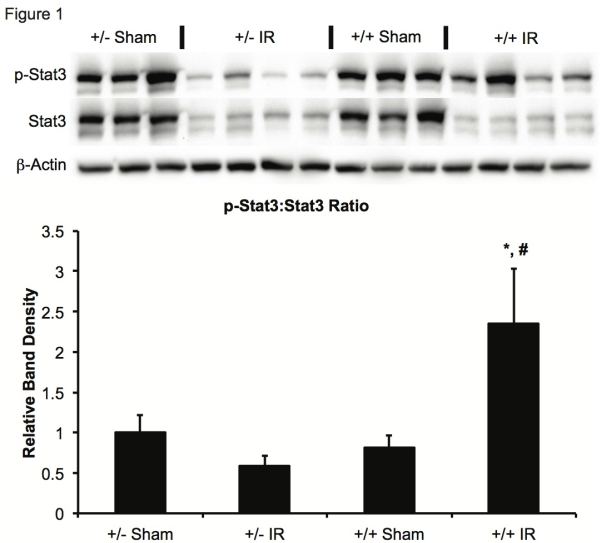Protective Effects of Nrf2 Over-Activation in Myeloid Cells During Hepatic Ischemia Reperfusion Correlates with Stat3 Signaling in Hepatocytes.
1Surgery, University of Wisconsin School of Medicine and Public Health, Madison, WI
2Biology, Institute of Molecular Health Sciences, Swiss Federal Institute of Technology, Zurich, Switzerland
3Pharmaceutical Sciences, University of Wisconsin School of Pharmacy, Madison, WI.
Meeting: 2016 American Transplant Congress
Abstract number: C98
Keywords: Liver transplantation, Mice, Warm ischemia
Session Information
Session Name: Poster Session C: Ischemia Reperfusion Injury and Organ Preservation
Session Type: Poster Session
Date: Monday, June 13, 2016
Session Time: 6:00pm-7:00pm
 Presentation Time: 6:00pm-7:00pm
Presentation Time: 6:00pm-7:00pm
Location: Halls C&D
Ischemia-reperfusion injury (IRI) is a consequence of liver resection and liver transplantation. The Nrf2-antioxidant response element pathway is a key mediator of cellular defense against oxidative stress. We have shown that transgenic mice with myeloid cell-specific, over-activation of Nrf2 (LyzMcre+/caNrf2+) sustain decreased hepatocellular damage when compared to control mice (+/-) after hepatic IRI. Our study objective was to delineate the Nrf2-dependent mechanisms involved in Nrf2-induced, myeloid cell-mediated protection of hepatocytes during IRI.
LyzMcre+/caNrf2+ (+/+) and control (+/-) mice underwent 60 min of hepatic ischemia followed by 6 h of reperfusion. Serum ALT was measured using an IDEXX VetTest Analyzer. Western blot of liver tissue was performed to examine signaling proteins. Serum IL-6 levels were measured with a Luminex bead-based assay. One-way ANOVA followed by Fisher LSD post-hoc was performed. P<0.05: *(+/+) Sham vs. (+/+) IR; #(+/+) IR vs. (+/-) IR.
Serum ALT levels were lower in (+/+) mice compared to controls (648.75 ± 106.11 vs. 3214.71 ± 995.18, p=0.015). After IRI, the ratio of p-Stat3:total Stat3 signaling in hepatocytes was significantly greater in (+/+) mice compared to controls  . Serum IL-6 levels were greater in (+/+) vs. controls (77.20 ± 31.56 vs. 27.39 ± 1.80, p=0.040) after IRI.
. Serum IL-6 levels were greater in (+/+) vs. controls (77.20 ± 31.56 vs. 27.39 ± 1.80, p=0.040) after IRI.
These data suggest that the combination of Nrf2 over-activation in myeloid cells and hepatic IRI may protect hepatocytes from damage through IL-6/Stat3 signaling mechanisms. Additional studies are necessary to define the mechanisms involved in transcellular cross-talk between Nrf2 induction in myeloid cells and hepatocytes during IRI.
CITATION INFORMATION: Harberg C, Lee L.-Y, Werner S, Johnson D, Johnson J, Foley D. Protective Effects of Nrf2 Over-Activation in Myeloid Cells During Hepatic Ischemia Reperfusion Correlates with Stat3 Signaling in Hepatocytes. Am J Transplant. 2016;16 (suppl 3).
To cite this abstract in AMA style:
Harberg C, Lee L-Y, Werner S, Johnson D, Johnson J, Foley D. Protective Effects of Nrf2 Over-Activation in Myeloid Cells During Hepatic Ischemia Reperfusion Correlates with Stat3 Signaling in Hepatocytes. [abstract]. Am J Transplant. 2016; 16 (suppl 3). https://atcmeetingabstracts.com/abstract/protective-effects-of-nrf2-over-activation-in-myeloid-cells-during-hepatic-ischemia-reperfusion-correlates-with-stat3-signaling-in-hepatocytes/. Accessed December 13, 2025.« Back to 2016 American Transplant Congress
